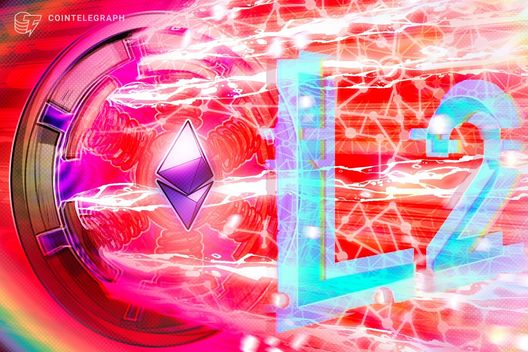In a recent statement that has stirred conversations within the cryptocurrency community, Anatoly Yakovenko, co-founder of the renowned Solana blockchain, has raised significant concerns regarding the security and centralization of Ethereum layer-2 networks. These platforms, designed to enhance the scalability and efficiency of transactions on the Ethereum blockchain, are facing scrutiny as potential weaknesses become more apparent.
“The challenges posed by layer-2 solutions could undermine the very decentralization ethos that blockchain technology stands for,” Yakovenko remarked.
Yakovenko’s comments highlight a growing concern among blockchain experts and enthusiasts alike, as the reliance on centralized mechanisms in layer-2 solutions may open the door to vulnerabilities and risks that could affect the broader Ethereum network. This kind of critique is crucial in an industry where security and decentralization are paramount principles.
As Ethereum continues to evolve with various layer-2 solutions gaining traction, understanding these potential pitfalls is vital for developers, investors, and users. The insights provided by Yakovenko encourage a deeper examination of the operational frameworks that govern these networks and contribute to ongoing discussions about the future of blockchain technology.
Security and Centralization Issues in Ethereum Layer-2 Networks
Anatoly Yakovenko, co-founder of the Solana blockchain, highlights critical concerns regarding Ethereum layer-2 networks. Below are the key points of his observations:
- Security Vulnerabilities:
- Layer-2 networks may expose users to various risks due to inadequate security measures.
- Potential for hacks and exploits that could compromise user funds.
- Centralization Concerns:
- Many layer-2 solutions are controlled by a limited number of validators or governance entities.
- This centralization can lead to reduced trust and reliability among users.
- Impact on User Experience:
- Increased security risks may deter new users from engaging with Ethereum layer-2 solutions.
- Centralized systems can lead to slower transaction processes and higher costs.
- Implications for the Ethereum Ecosystem:
- Persistent issues may hinder the reputation and adoption of Ethereum layer-2 networks.
- Investors and users need to remain vigilant regarding the platforms they choose to utilize.
Ethereum Layer-2 Security Concerns: Insights from Solana’s Co-Founder
In a recent analysis by Anatoly Yakovenko, the co-founder of Solana, significant vulnerabilities have been highlighted regarding Ethereum’s layer-2 networks. This critique illuminates the ongoing debate surrounding blockchain scalability and security. While Ethereum’s layer-2 solutions aim to enhance transaction speeds and reduce fees, the technology isn’t without its drawbacks. Yakovenko pointed out that these networks face notable security challenges and issues related to centralization, potentially undermining the decentralization ethos that is fundamental to blockchain technology.
When we compare these concerns to similar developments in the blockchain space, one cannot overlook the contrasting approaches of various networks. For instance, Solana, which emphasizes speed and low transaction costs, operates on a different mechanism that inherently tackles some of these security issues. Its unique consensus algorithm enables a high throughput of transactions while maintaining a lesser degree of centralization than what Ethereum’s layer-2 solutions exhibit.
These insights may benefit developers and investors who are prioritizing security and decentralization in their blockchain projects. On the other hand, current Ethereum layer-2 network users could find themselves facing risks as centralization could lead to more significant vulnerabilities and a potential loss of trust in the overall Ethereum ecosystem. As the competition heats up, understanding these nuances becomes crucial for stakeholders aiming to navigate the complexities of blockchain technology.
Moreover, this discourse could empower platforms exploring emerging alternatives to Ethereum’s ecosystem, driving innovation. Companies that capitalize on the shortcomings revealed by Yakovenko may disrupt the market by offering more secure and decentralized solutions, making it essential for Ethereum developers to reconsider their strategies moving forward.
















